If you or someone you love has been diagnosed with Attention Deficit Disorder (ADD) or Attention Deficit Hyperactivity Disorder (ADHD), you’ve probably heard that many patients are prescribed stimulant drug medications. As we will review in this article, stimulant drugs may be effective for some people, but they don’t come without risks. In fact, research shows that between 20-30% of children cannot tolerate the side effects of commonly prescribed drugs or do not respond to them.
So, what are the alternatives for treating ADHD? In this article, we introduce you to some of the common side effects of common ADD/ADHD medications and we review the research behind some clinically proven non-prescription alternatives for treating the symptoms of ADD/ADHD.
What is ADD/ADHD?
ADHD, short for Attention Deficit Hyperactivity Disorder, is a neuropsychiatric disorder. Researchers have identified that people with ADHD tend to have smaller structures of some areas of the brain than people without ADHD, low levels of key levels of brain chemicals (neurotransmitters) that support communication between brain cells and differences in how networks work, specifically those involved in reward, focus, attention, shifting between tasks, and planning.
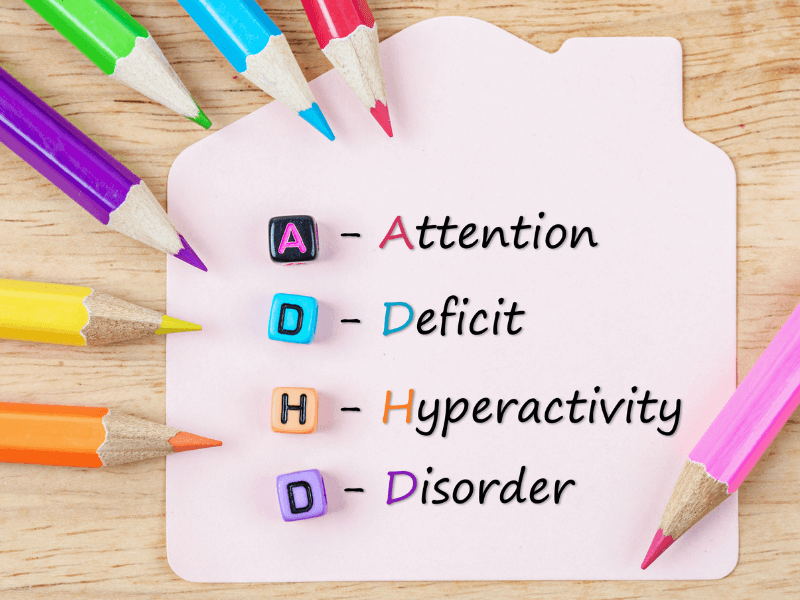
ADD/ADHD used to be known as a condition that affected only children, since it can be detected as young as two to four years of age. However, researchers now know that ADD/ADHD exists in adults as well as children.
The main symptoms of ADHD include:
- Inattentiveness: unfocused and having a short attention span, constantly changing activities or tasks, appearing forgetful or losing things, having difficulty organizing or prioritizing tasks, making careless mistakes in work or school.
- Hyperactivity and impulsiveness: An inability to sit still, fidgeting constantly, inability to concentrate on tasks, excessive talking, inability to wait their turn, acting without thinking about consequences, and excessive physical movement.
ADHD can sometimes be misdiagnosed or overlooked. Some of the symptoms overlap with other conditions that affect the brain. These conditions include anxiety disorder, oppositional defiant disorder (also called ODD, which is defined by negative or disruptive behavior toward authority figures), conduct disorder, depression, autism spectrum disorder, and learning difficulties. It is important to know that some people can have ADD/ADHD alongside one or more of these other conditions.
How is ADHD Treated?
In most settings, after a person (child or adult) is diagnosed with ADD/ADHD, they are often prescribed medication. However, medication for ADHD isn’t always effective, and the side effects may be more difficult to manage than the symptoms of ADD/ADHD itself.
There are lifestyle factors and supplements that have been clinically proven to help manage ADD/ADHD symptoms with lower risks of side effects. Below, we briefly review the pharmacological and non-pharmacological treatments for ADD/ADHD in children and adults.
Traditional Pharmacological Treatments for ADD/ADHD
There are two main types of drugs prescribed to people with ADHD: stimulant and non-stimulant drugs.
Stimulant drugs are usually the first line of therapy for children and adults diagnosed with ADHD. The most commonly prescribed stimulant drugs include:
- Amphetamines and Methamphetamines, like Adderall, Dexedrine, Evekeo, Dextrostat, and Zenzedi.
- Methylphenidates, like Ritalin, Methylin, Metadate ER, Metadate CD, Quillivant XR, Quillichew ER, and Concerta
While numerous studies have shown that treatment of ADHD with stimulant drugs does help to reduce some of the most difficult symptoms of ADD/ADHD, there is controversy regarding the following:
If stimulant drugs are not an option for the person with ADD/ADHD or they do not want to take stimulant drugs due to the risks, some people opt to take non-stimulant drugs. The difference between stimulant and non-stimulant drugs for ADD/ADHD is that stimulant drugs increase the levels of the neurotransmitters dopamine and norepinephrine by targeting brain receptors. <
Non-stimulant drugs work in different ways to manage symptoms by regulating the system that manages neurotransmitter production. Atomoxetine (ATX), guanfacine (GXR), and clonidine are some of the most common FDA-approved non-stimulant medications prescribed to people with ADHD, usually as a second line of treatment if stimulant drugs were not effective or if the side effects were too risky.
However, the side-effects associated with non-stimulant drugs is also extensive:
The most common side effects in children and adolescents are:
• Upset stomach (e.g., nausea, vomiting).
• Decreased appetite, which may cause weight loss.
• Nausea.
• Dizziness.
• Headache.
• Mood swings.
• Insomnia.
• Drowsiness.
• Abdominal pain.
The most common side effects in adults are:
• Constipation.
• Dry mouth.
• Insomnia.
• Erectile dysfunction.
• Urinary tract abnormalities (e.g., trouble passing urine, pain with urination).
• Painful menstruation.
• Hot flashes.
Alternative Treatment to Support ADD/ADHD Management
Although traditional pharmacological treatments for ADHD symptoms for most children work in the short-term, 20 to 30% of children are non-responders or cannot tolerate the side-effects of these drugs. The same is true for adults diagnosed with ADHD.
Because of the risks associated with traditional pharmacological treatment, many parents of children with ADHD and adults with ADHD have expressed interest in choosing non-prescription treatment options and alternative medicine to address ADHD.
In fact, according to a 1999 survey, parents of 64% of children with ADHD chose non-prescription alternative medicine treatments to address their children’s ADHD. Research shows that alternative therapies are as effective as prescription drugs, with a slight trend towards more effective results in the individuals who chose non-prescription treatment options, including supplements derived from nature Alternative therapies are discussed below.
Supplements That May Help Manage ADD/ADHD
There are numerous herbal extracts and nutrients that have clinical data to support their use as ADD/ADHD treatment on their own, as a cocktail of nutrients and herbs, or together with people who choose to take pharmacological treatments.
Below we describe several of these non-pharmacological components which may be alternative or supportive treatment for people living with ADD/ADHD.
Herbs and Botanicals
Bacopa Monnieri Extract
Bacopa monnieri extract, or Brahmi, is a traditional Indian medicinal plant that has multiple effects on the central nervous system. Bacopa monnieri extract can help protect the nervous system and improve problems in processing information.

Bacopa monnieri
A recent literature review helped to clarify how Bacopa monnieri may be beneficial to people with ADHD; it likely works through multiple signaling pathways to mitigate harmful oxidative stress that affects the central nervous system.
In one clinical study, 31 children previously diagnosed with ADHD were given 225 milligrams (mg) of Bacopa monnieri extract daily for a total of 6 months. Symptoms of attention deficits were improved in 85% of the children. More than half of the children experienced reductions in impulsivity and psychiatric disturbances. In addition, learning improvements occurred in 78% of the children. Two other clinical studies also found that Bacopa monnieri improves ADHD symptoms.
Grape Seed Extract
Children diagnosed with ADHD demonstrate higher levels of oxidative stress than children without ADHD. Higher levels of oxidative stress increase tissue damage, and the type of free radicals that is present in people with ADHD make them more vulnerable to heart disease. As a result, potent antioxidants like grape seed extract that provide protection against excessive oxidative stress and heart disease risk factors, therefore, may be beneficial for those with ADHD.
Grapeseed is easily absorbed and utilized by the body and it provides potent protection against free radicals and damage to cells and DNA.
Lemon Balm Extract
Lemon balm, or Melissa officinalis, has been used as an anti-anxiety, sleep-inducing, and memory-enhancing nutrient for over 2,000 years.
Clinical trials have provided scientific evidence for the impact of lemon balm, demonstrating its ability to improve mood, reduce stress, and help improve sleep quality.
One study that investigated the impact of lemon balm extract on 20 stressed volunteers over a 15 day period found that anxiety was reduced in 70% of the study participants and insomnia was reduced in 85% of them. Given that ADHD patients often experience stress and suffer from a high rate of insomnia, lemon balm extract is likely a helpful supplement for these patients.
Saffron
There is evidence to suggest that saffron (Crocus sativus) can be beneficial to those with ADHD. Initial studies have demonstrated that saffron is effective as methylphenidate in improving ADHD symptoms over a 6-week period. Another, recent study echoed these findings.
Vitamins, Minerals, and Other Components
Magnesium and Magnesium + Vitamin B6
Children with ADHD have lower levels of magnesium than children without ADHD, so researchers have long been interested in understanding whether magnesium supplementation could improve ADHD symptoms.
A clinical study carried out with 50 children diagnosed with ADHD and who were also deficient in magnesium examined the impact of 200 mg supplementation of elemental magnesium over a 6-month period. Compared to the children who did not receive magnesium supplementation, those taking the magnesium developed higher levels of magnesium in their hair, which was accompanied by a significant reduction in hyperactivity.
Recent research into the role of nutrition on ADHD has also shown that magnesium appears to influence the population of “good” bacteria in the gut in a way that could impact ADHD symptoms. While magnesium supplementation reduces the symptoms of ADHD in children with the disorder, supplementation with a combination of magnesium and vitamin B6 has been shown to lower ADHD symptoms even further.
Vitamin D
Research has shown that vitamin D deficiency is more common in ADHD patients than in healthy controls, likely due to lower vitamin D levels and vitamin D receptor levels. One study found that 64% of ADHD patients were not only deficient in vitamin D but were moderately or severely deficient. A more recent comprehensive meta-analysis covering data from over 11,000 children also found that children with ADHD have significantly lower levels of vitamin D than those without ADHD.
The first study to measure the effects of vitamin D supplementation and its effects on ADHD found that supplementation improves cognitive function, inattention, hyperactivity, and impulsivity. A recent double-blind, randomized clinical trial also showed that vitamin D taken as an oral supplement improves symptoms of ADHD, particularly symptoms of inattention and that it is especially beneficial for those who previously had insufficient levels of vitamin D.
Another recent study showed that vitamin D supplementation also improves ADHD symptoms without serious adverse side effects in those who also take methylphenidate for their ADHD.
L-Theanine
L-Theanine is a protein-building block (amino acid) that is present in significant amounts in green tea.
L-Theanine 0has been found to have a calming effect and is used to improve cognitive and mental performance. A study found that people experience a shift toward more relaxing brain waves within 40 minutes of taking 50 to 200 mg theanine doses.
A double-blind, placebo-controlled study on boys diagnosed with both ADHD and sleep disorders also demonstrated that L-theanine significantly increases sleep efficiency as well as time spent asleep.
Vitamin C
People living with ADHD taking stimulant medications may have higher risks of heart complications than the general population. Researchers have examined what components could help to protect the heart against the oxidative damage that may occur in people taking stimulant medications.

Are you getting enough Vitamin C?
Vitamin C is the most prevalent water-soluble antioxidant in the human body and plays a major role in other protective mechanisms against heart disease. Vitamin C may therefore help to mitigate the enhanced cardiovascular risks that ADHD patients experience.
Iron
Recent studies have found an association between ADHD and iron deficiency. Children with more severe iron deficiencies are more likely to also experience more severe ADHD symptoms, and iron deficiency in infancy has been shown to be associated with social and behavioral problems in adolescence.
Based on these findings, it has been suggested that iron supplementation may reduce symptoms of ADHD, and evidence suggest that it is effective. In one study, researchers provided children with 80 mg of iron per day and found that this iron supplementation improved ADHD symptoms. According to this study, iron therapy was also well tolerated.
Melatonin
The role of melatonin in people who are living with sleep disorders has been studied for decades. Common sleep disorders include insomnia, delayed sleep onset, and nighttime awakening issues.
One study showed that when children took melatonin supplements at bedtime, they were able to fall asleep faster and also experienced additional health and behavioral benefits than those who didn’t. The same study showed that, once the melatonin was discontinued, the children’s sleep and behavioral problems returned.
The positive effects of melatonin are echoed by earlier trials in children with ADHD who are affected by sleep disorders, which help to confirm that melatonin is effective in treating insomnia.
Zinc Sulfate
Zinc deficiency appears to contribute to the development of ADHD.
Over the course of a 6-week double-blind study of 44 children previously diagnosed with ADHD, zinc sulfate supplementation, given as an adjunct to methylphenidate, improved ADHD symptoms.
Other research on the impact of zinc on those with ADHD over an 8-week period suggests that a daily dose of 30 mg is effective in reducing the amount of amphetamine needed to treat ADHD and that this dosage is well-tolerated and safe.
Omega-3 Fatty Acids
Omega-3 deficiencies have been observed in those with ADHD. Though the evidence related to the influence of omega-3s on ADHD is mixed, certain studies suggest that multiple types of omega-3 fatty acids may be effective in treating ADHD symptoms in adolescents.
A 30-week study on omega-3 fatty acids demonstrated potential therapeutic effects on ADHD symptoms in children, particularly in those who are hyperactive and impulsive. Some of the specific benefits that have been observed with omega-3 supplementation in those with ADHD are cognitive effects, including enhanced visual learning, reading, and memory, as well as improvements in hyperactivity, impulsivity, and attention.
Omega-3 supplementation appears to enable the reduction of stimulant medication doses in those with ADHD. Even though more research is required, given this impact and the safety profile of omega-3s, some experts have suggested that omega-3 supplementation may offer a suitable alternative to pharmacological interventions in those with ADHD.
Phosphatidylserine
Phosphatidylserine is a fat-based substance that protects nerve cells in the brain and helps them to transmit messages. Supplementation with phosphatidylserine has been shown to improve ADHD symptoms in children, including symptoms related to cognition. Some research suggests that phosphatidylserine supplementation may be particularly effective for ADHD children who are experiencing strong behavioral and emotional symptoms.
Main Takeaway
ADHD is a complex condition that can significantly affect people’s well-being. While traditional “first-lines” of treatment (stimulant drugs) are effective for about 70% of people diagnosed with ADHD, a significant percentage of people with ADHD may not benefit from these drugs due to ineffectiveness, severe symptoms, or a greater risk of addiction, among others.
Fortunately, there are several herbal and nutritional supplements, which we review here, that have been demonstrated to assist in managing ADHD symptoms. With your healthcare team’s approval, these may be used in conjunction with or instead of pharmacological treatment.

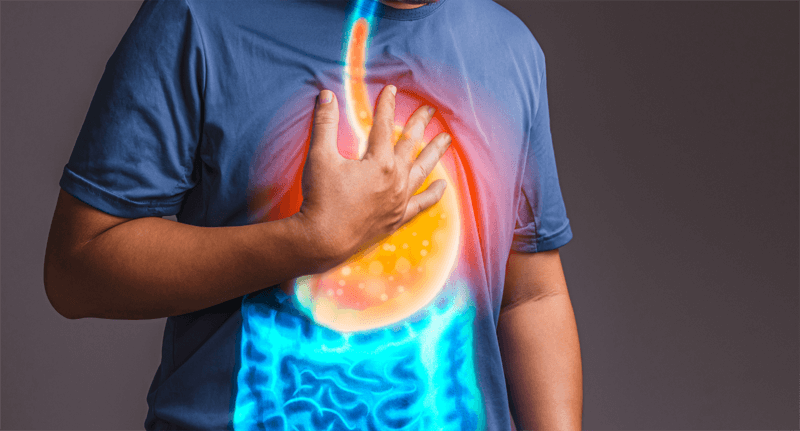

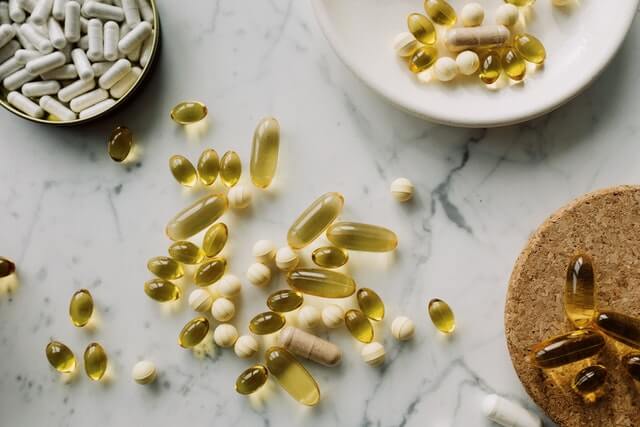



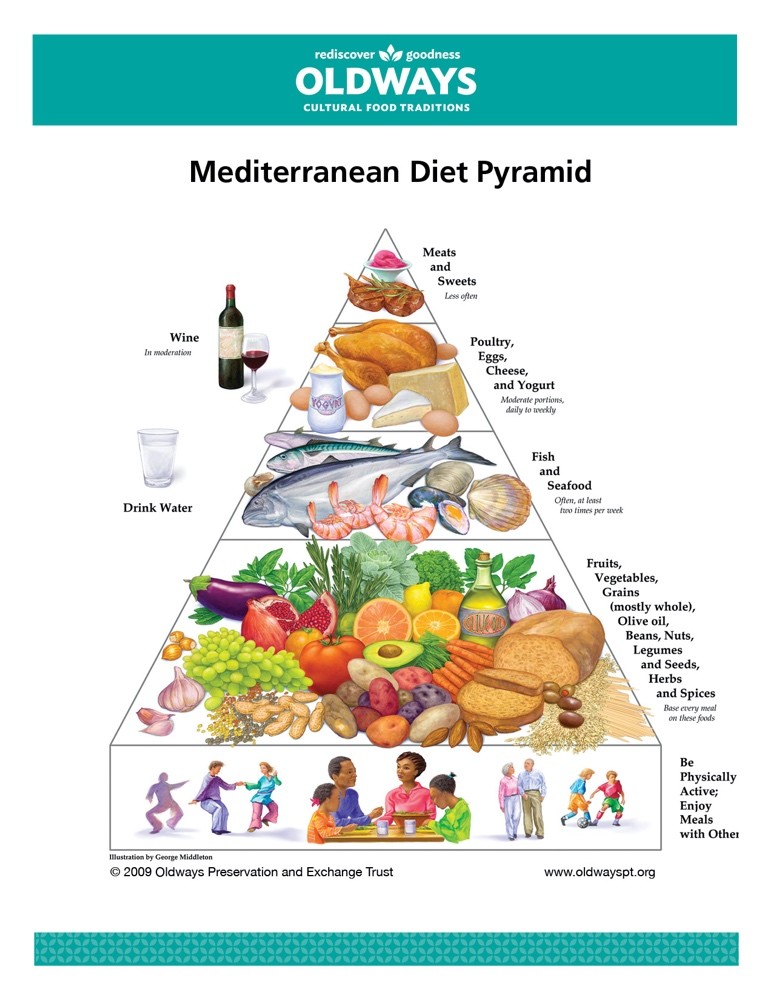
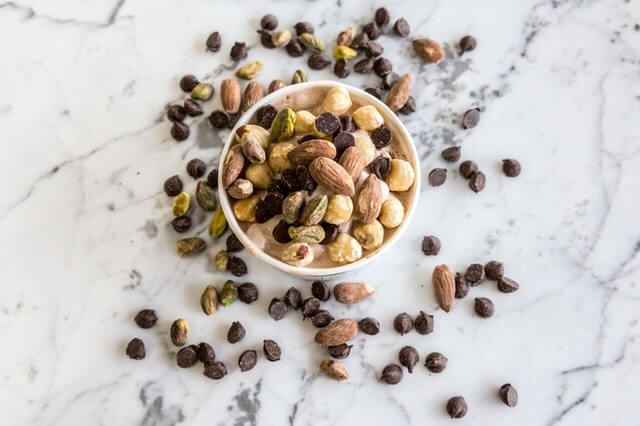





 • Helps to maintain healthy blood sugar levels
• Helps to maintain healthy blood sugar levels
